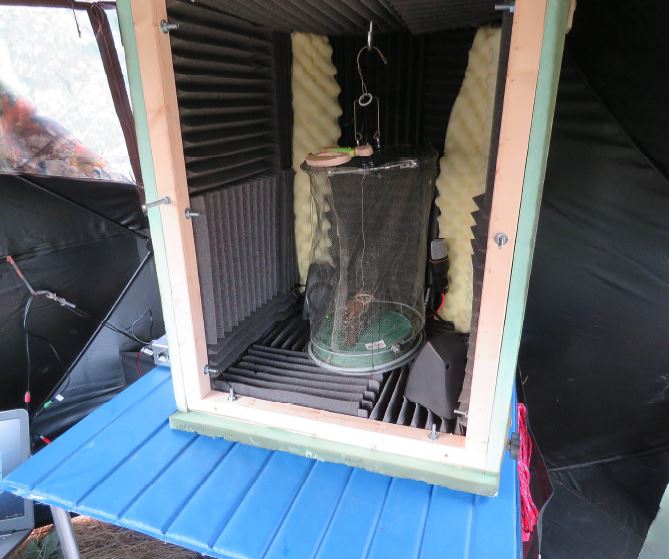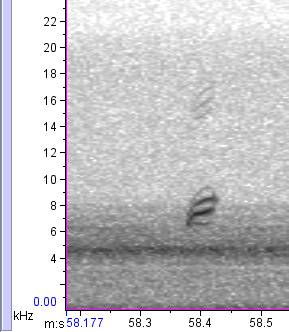Did you know that birds use high frequency calls to find each other at night?! This is one theory explaining why many bird species emit short (40 -150 ms), mid- to high frequency (3-10 kHz) vocalizations called Nocturnal Flight Calls (NFCs) during migration. Recording NFCs, especially in the eastern US, has become a viable method to monitor migrating birds.
Nighttime-flying songbirds are hard to count during migration.
This project will help us monitor their movements!
More data, especially isolated NFCs from western species, will improve automated classifications of recordings in the field of bioacoustics. This Fall, the Intermountain Bird Observatory, in collaboration with and funded by the MPG Ranch in Florence Montana, piloted a research project recording NFCs in a Portable Recording Station (PRS). Think of a dark, sound-proof recording studio for birds!

IBO Research Biologist, Christian Meny, worked with University of Montana Bird Ecology Lab’s (UMBEL) bird banders on a floodplain site at MPG Ranch to run the PRS. After banding, birds were placed in the PRS- an acoustically isolated recording booth operated in a dark hunting blind in order to simulate night.
Our recordings will help calibrate computers so they
can count and identify flight calls of birds passing overhead
Birds in the PRS experience a minute of complete silence, followed by two minutes of stimulus playback (recordings of NFCs given by conspecifics or closely-related species), and then another minute of silence. Birds sampled include warblers, sparrows and thrushes because of their families’ known proclivity for emitting NFCs during migration.

Overall, we recorded a total of 84 NFCs! Highlights include true NFCs “elicited” from Orange-crowned Warblers, Gambel’s White- crowned Sparrows and from one individual Fox Sparrow. Various vocalizations were recorded from Chipping Sparrows, Common Yellowthroats, Dark eyed Juncos, MacGillivray’s warblers, Lincoln’s Sparrows, Song Sparrows and Wilson’s Warblers. These data will help classify and catalogue bioacoustics data in the Intermountain west, and contribute to other bioacoustics projects including MPG Ranch’s Project Night Flight: an effort consisting of 20 passive microphones recording the night sky (and migrating birds) across much of the Bitterroot River Valley in Montana.